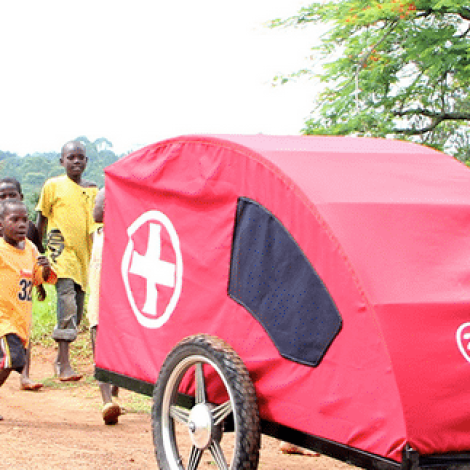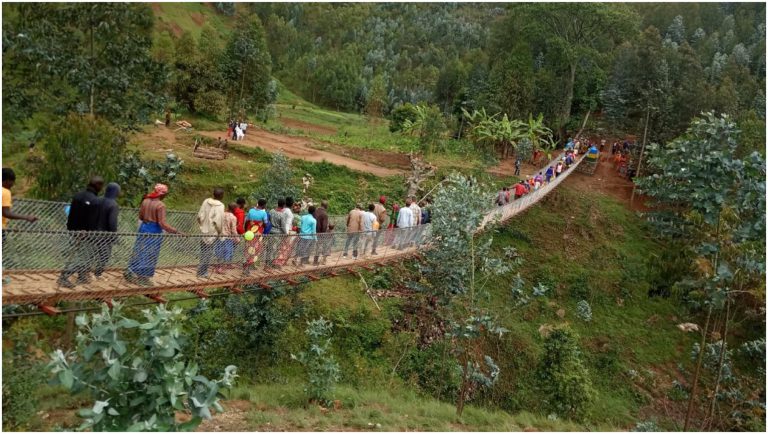People who need medical care in rural developing countries can be stranded by long distances to clinics, a lack of vehicles and poor roads. Hardware designers have answered the problem with a host of inventions, including modified bicycles and covered stretchers on wheels that are pulled by motorcycle, pack animals or people.
“Patenting a social-impact product hinders scale, ultimately obstructing the maximum impact that particular product would have in the world if it was open source” – Chris Ategeka
Designs are often original and arise as much from the inventor as from the customs and technology in each region. But even though their intellectual property is at stake, designers argue that protecting it is not necessary. Patents in this space might even be detrimental, according to two engineers who spoke with E4C.
“I am a big advocate for ‘open sourcing’ all social-impact products,” says Chris Ategeka, founder of Doctors with Borders (formerly Rides for Lives), a medical care venture in rural Uganda and an E4C Contributing Editor. Ategeka has developed one-person ambulances powered by pedals and motorcycles, and he has recently expanded his business to provide mobile clinics in modified buses.
[See Chris Ategeka’s account of Lessons Learned Running Mobile Clinics in Rural Uganda.]
“All hands on deck is needed in social markets,” Ategeka says. “Patenting a social-impact product hinders scale, ultimately obstructing the maximum impact that particular product would have in the world if it was open source.
“If some one can copy your idea that means you have something worth copying. But more importantly, a maximum number of marginalized people will have access to a product or a service they would not have had otherwise.”
“Making the design open source means that manufacturers in other countries can serve the people in their area” – Jessica Vechakul
Also, IP has not been an issue, at least so far, because the nature of the product seems to limit competition in each market. Jessica Vechakul worked with DISACARE Weelchair Center in Zambia to develop the Zambulance, a stretcher pulled by a bicycle. In her experience, manufacturing the Zambulance locally is necessary because large-scale manufacturers in places like China are not interested. Demand is too low to offset the high shipping costs, and that limits competition from foreign distributors, Vechakul says.
[See Five Questions with Jessica Vechakul.]
“Making the design open source means that manufacturers in other countries can serve the people in their area. From my records, the Zambulance design has been modified or replicated in Malawi, Uganda, Democratic Republic of Congo, and Namibia. Even if we had patented the design, neither I nor DISACARE have the resources to ensure that the patent is enforced,” Vechakul says.
That calculation would change for other types of products, however.
“For example, a solar lantern company may want to patent their product if they are selling in areas where intellectual property rights are strongly enforced,” Vechakul says. “They might sell to a market in the United States and Europe to subsidize sales in developing countries. Other technologies like the UV tube water purifiers developed by UC Berkeley and deployed by Water Health International are patented. Their technology is difficult to replicate in developing country settings and patenting allows them to earn income through licensing.”
Coming soon
See the Zambulance and other innovations in low-cost transportation for medical patients in our Solutions Library. We’ll post the links here when they are finalized.



Compliments.. This works. community demand based solutions.. keep up the flow #blessings